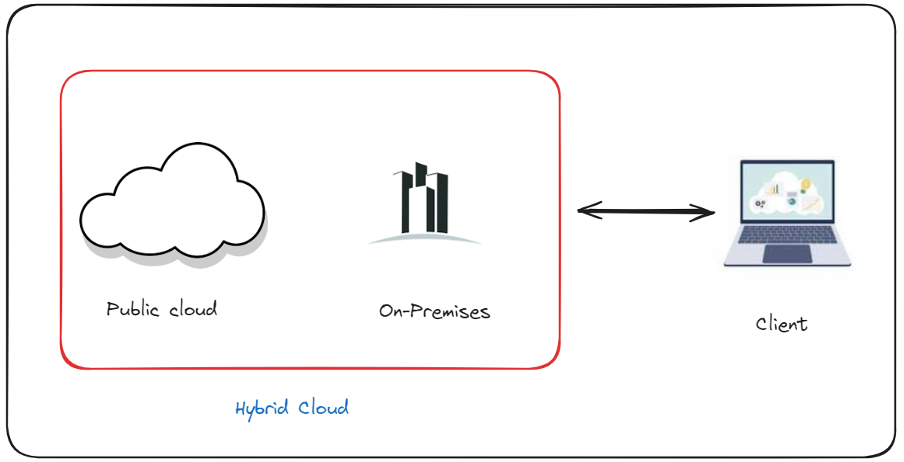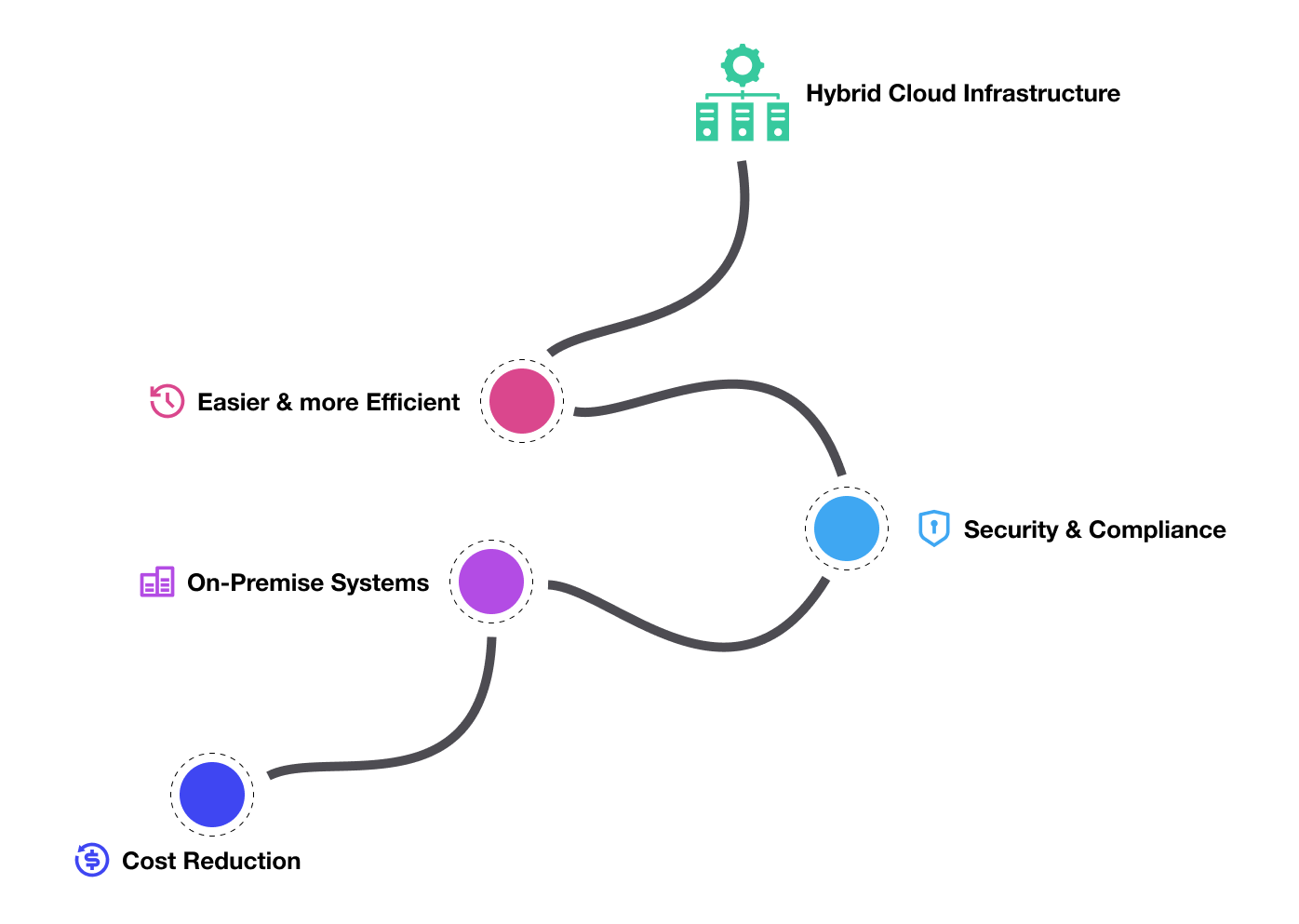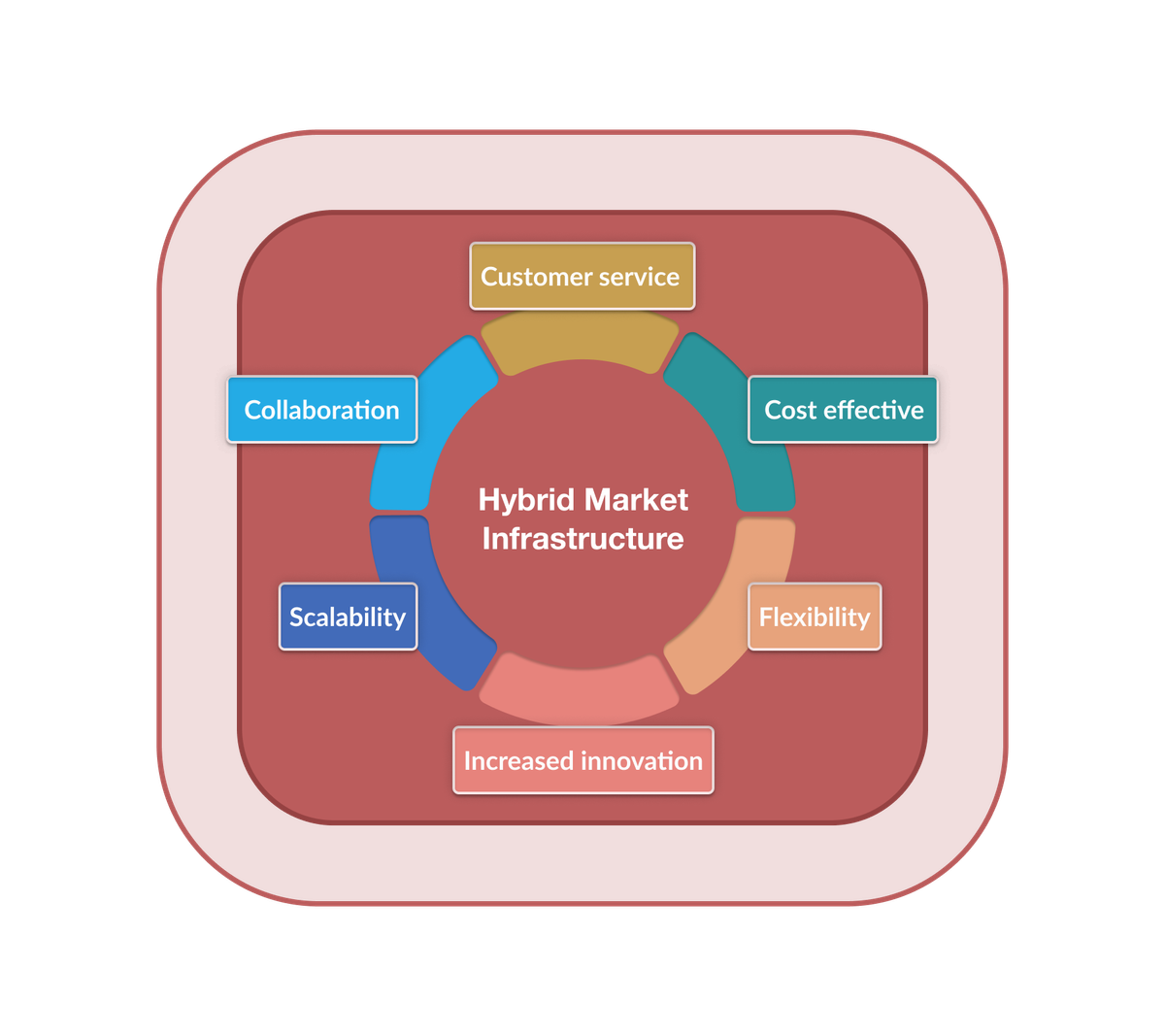Cloud computing is a powerful technology that gives businesses the freedom to increase their storage and processing capacity as needed. Cloud-based applications and data are being migrated by organizations across nearly all industries. We are living proof of how the tech companies have been utilizing cloud computing in recent years. Let me put some facts in front of you to make you aware of this impact.
Google reports suggest that the global cloud computing market is expected to grow by around 17% (CAGR) every year between 2021 and 2026. Some of them, meanwhile, are unable to switch completely to the cloud due to various factors, such as ownership of old systems or special regulatory constraints. By utilizing a hybrid IT infrastructure, companies can take advantage of cloud services without making a full migration. In this blog will understand Hybrid deployments and their importance.
What are Hybrid Deployments
A hybrid infrastructure platform combines one or more private and/or public clouds with the organization's on-site data center. This technology is used by many businesses to host important applications on public clouds and keep sensitive or important data on their servers, in a colocation center, or on their private cloud.
By taking advantage of both on-premises and cloud environments, organizations can enhance their IT Infrastructure, achieve cost efficiency, and speed up the deployment of applications and services.


In the end, every organization wants to optimize its Infrastructure costs as much as it can and Hybrid Deployment can play a major role in achieving this
Reduce Cost With Hybrid Deployment
Optimize Resource Allocation: With hybrid deployment, companies can use on-premises resources for workloads that are steady and predictable and dynamically scale to the cloud for periods of high demand. This adaptability reduces needless infrastructure costs and avoids over provisioning.
To ease your understanding let me explain you with an example: There is an XYZ Retail shop which has a well-established On-premise infrastructure which can handle day-to-day operations without any hurdles.But during Big Friday sale and other festive offers the existing infrastructure struggles to cope with the sudden increase in their website traffic. Sudden sharp surge of 200% increase of live customers on the website.
Implementation: In order to tackle this obstacle, During busy seasons, XYZ Retail moved its platform to a cloud service provider (CSP), which allowed for automatic scalability to accommodate increasing demand. This lessened the requirement for a large-scale, ongoing on-premises infrastructure that would only be used to its maximum potential a few times a year.
Result: As a result the infrastructure expenditures for XYZ Retail were significantly reduced, which removed the need to over provision on-premises servers to handle sudden peak loads. They were able to invest in other areas of business growth and manage resources more effectively.
Legacy System Integration: As we know many companies still use legacy software, which can make cloud migration challenging. Hybrid deployment acts as a bridge that enables smooth integration of cloud and on-premises environments. By prolonging the lifespan of current infrastructure, this strategy avoids the need for expensive replacements. After understanding how hybrid deployment helps in cost-effectiveness. Let's understand the second most important factor which every company craves for
Accelerating Time-to-market
Faster Development and Testing: Cloud platforms give teams access to on-demand resources for testing and development, facilitating rapid iteration and the speedier delivery of high-caliber products. The software development life cycle is streamlined via hybrid deployment, which makes it easier to integrate development and production environments.
Global Reach and easy accessibility: The global presence i.e presence of servers in every region of the world helps cloud services to provide lower latency and also to increase accessibility for consumers everywhere. Through the deliberate deployment of resources across many geographic zones, firms can expand their market reach and provide a uniform customer experience worldwide.
Improved Disaster Recovery: Cloud services boost the resilience of hybrid deployments by offering strong disaster recovery options. Businesses can promptly recover and restore operations in the case of a system breakdown or data loss, minimizing downtime and protecting their brand.
A research conducted by the Disaster Recovery Preparedness (DRP) Council found that 73% of organizations globally lack sufficient disaster recovery plans, underscoring the need for hybrid deployments' strong disaster recovery solutions.
Let me take you through an example of how hybrid deployment faster your development process:
Example: XYZ Retail wants to roll out new features and updates in their e-commerce platform
to stay ahead of the competitors. However, the traditional deployment and testing process was taking time which hindered the faster deployment of services In order to overcome this, XYZ Retail implemented a hybrid deployment strategy that maintained the production environment on-site while integrating the development and testing environments in the cloud.
Implementation: The development team was able to access resources on demand by setting up development and testing environments in the cloud. This made testing, iteration, and prototyping more quickly. The features were smoothly added to the on-premises production environment after they passed testing.
Result: A 50% decrease in the time-to-market for new features was accomplished by XYZ Retail. They were able to react swiftly to market developments, client input, and rivalry because of the flexibility offered by cloud-based development and testing platforms.
Today, there are tons of companies that are utilizing hybrid deployment under the hood. Netflix, Dropbox, and Airbnb are a few of them.
Hybrid Deployment: A Winning Solution
When compared to 100% cloud or 100% on-premises infrastructure, there are numerous advantages to using a hybrid IT architecture. With this architecture, organizations may use their IT resources, improve security, and guarantee business continuity. Public cloud, private cloud colocation, edge, etc. may all be used harmoniously in this well-designed IT ecosystem, each for the use cases that best fit them.

